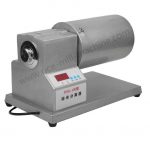CATEGORIES
How to produce good quality milled rice?
There are three requirements for producing good quality milled rice:
- Good quality raw material: the starting quality of the paddy is should be good and paddy should be at the right moisture content (14%) and have a high purity
- State of the art equipment: the rice mill should be clean and well maintained, and
- Operator skills: the mill should be operated by a skilled operator.
If any of these requirements is not met, milling will result in poor quality rice. For instance, milling of poor quality paddy will always result in poor quality milled rice, even if a state-of-the-art mill is used or the miller is experienced. Similarly, the use of good quality paddy by a well skilled operator may result in poor quality rice if the mill is not maintained regularly. The losses in rice milling that can be attributed poor paddy quality, machine limitations, or operator innocence, is anywhere from 3 to 10% of potential.
1. Good quality paddy
Many crop management factors have an impact on the quality of paddy. A sound paddy kernel, one that is fully matured and not subjected to physiological stresses during its grain formation stage.
Effect of postharvest management on paddy quality
2. State of the art equipment
It is not possible to produce good quality milled rice with poor milling equipment even if the paddy quality is optimal and the operater is skilled.
It is evenly important to service and maintain the mill properly.
3. Operators' skills
There are good and poor rice mill operators. Often, the mill operator is an untrained apprentice who has picked up skills on the job. An operator who is continually adjusting valves, hammering ducts, and screens does not have the required skills. In properly designed mills there should be very little adjusting required with the machines, once a steady state in the grain flow is attained. His mill however is often dusty, dirty, with ducts and bearings worn-out. Tell tales of improper mill operation are paddy in the rice husk exhaust, rice husk in the separator, brokens in the bran, excessive bran recovery, and under-milled rice. Training of operators in operation and maintenance of rice mills are crucial in improving rice quality.



